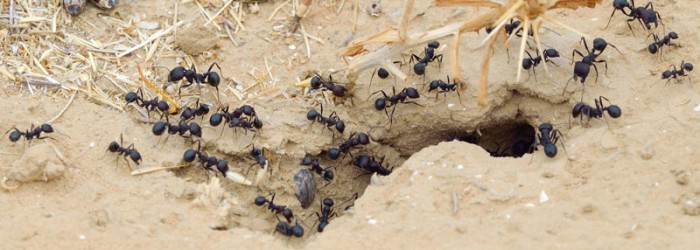Ants
Did you ever sit on your front porch steps as a kid, observing ants bustling around? It might have appeared a bit chaotic, but in reality, ants are some of the most organized insects out there. Remember dropping an M&M or a piece of apple, and seeing them team up to carry their treasures away? They function as a cooperative and highly efficient community.
In the United States alone, there are over 700 ant species, so it's pretty much a guarantee you'll face these fascinating insects in your home at some point.

Ants set up shop in subterranean colonies, coming together like one big party (after all, ants are social creatures). However, it’s not all fun and games—similar to feudal Europe, ant colonies consist of various roles, including workers and queens. The non-royalty ants are further divided into categories like reproductives, workers, and foragers. Most of the time, homeowners and business owners spot the foragers, who are out on the hunt for scrumptious treats (like the ones you have).
Ants aren’t too picky about what they munch on, though they have a soft spot for sweets (sound familiar?). Once they’ve found a delectable treat, they leave pheromone trails, guiding their fellow foragers to the feast. That’s why they seem to have an uncanny knack for finding their way into your home. Although the sight of ant swarms might be unsettling, it’s important to note that ants aren’t known for spreading diseases.
The great thing about ant control is that targeting the queen equals dealing a blow to the entire colony. However, this is often easier said than done, but it’s achievable with the right expertise.
The three most frequently reported ant species by U.S. homeowners are:
Carpenter Ants: These ants stand out as a concern for homeowners since they can actually damage the structure of your home instead of just being a nuisance. They won’t help with that chewed-through baseboard, but they will excavate wood for nesting sites and foraging trails, as if they’re prospecting for gold. This long-term damage affects homes and businesses alike.
Odorous House Ants: In terms of nuisance level, Odorous House Ants turn it up to 11. They don’t settle for just one residence, instead having multiple queens, which complicates eradication (unless you’re in the know). Keeping the vegetation around your home well-trimmed can limit their access. Unlike carpenter ants, they won’t harm structures, but their numerous presence can be quite bothersome for homeowners.
Pavement Ants: If you notice soil and sand emerging from beneath concrete slabs, patios, sidewalks, driveways, or even in basements, pavement ants might be the culprits. They do have stingers, but usually only use them when cornered. Like teenagers, they have a thing for greasy or sweet foods. Their underground nests and multiple queens, much like Odorous House Ants, make them a bit tricky to control.